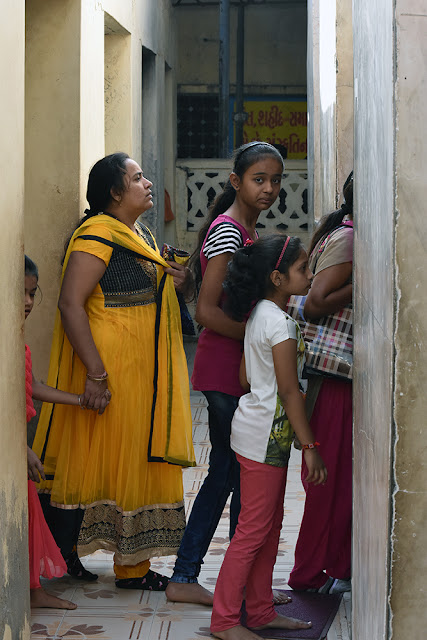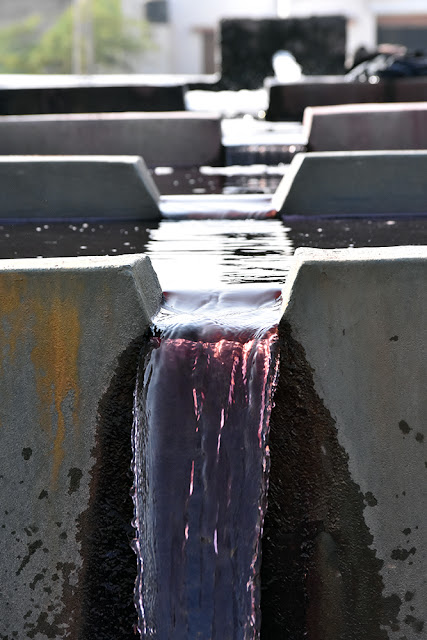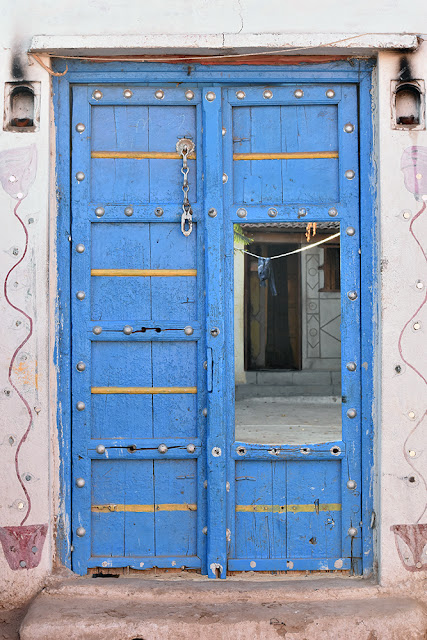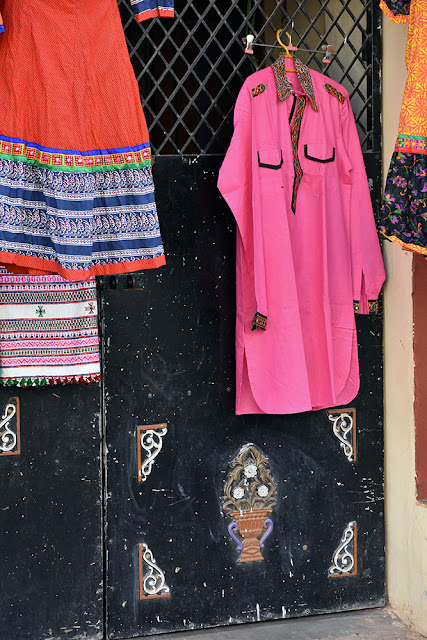We
set out a whole day to travel to these three destinations as they all
are close to each other with the farthest being 25km from Bhuj. We
decided to start with the farthest town called Anjar. After
reading about a bit of ruins in Anjar we got excited and left early
to explore the place but were deeply disappointed to note there
aren't any. Not the ones to give up we started scrutinising the
market only to find the finest jooti's for affordable rates. We
brought three pairs in one go!
The Rabari men wearing Balochistan frock-type kurta and Dhoti
These insane pyjamas are gathered at the waist and made out of 10 meters of fabric!
Later
we wanted to know if the typical Kutch/Gujarati traditional menswear
is available anywhere. After asking around we were directed to Khatri
Market where only one store called Suraj Clothing which retails in
selling these items. We bought the quintessential Lungi and the
Balochistan frock-type top for ourselves. It was worth visiting the
place.
Our
next destination was Ajrakhpur. There are no proper directions
hence stop and ask people the way.
Its
a tiny village which is dedicated to the art of Ajrakh print making
where the families stay and work. Dr Ismail Mohammed Khatri
has been one such family who are in the business since eons and
invites travellers to come stay, learn and shop from his workshop.
Ajrakhpur is known worldwide
for the art of Ajrakh,
block printing uses colours derived from nature, such as indigo,
henna, turmeric, pomegranate, iron and mud. In some cases, the
fabrics are washed up to 20 times.
Printing on both sides of the fabric is usually referred to as
Ajrakh, the name is believed to be originated from the Arabic name
Azrak that generally refers to blue. These printed fabrics are
usually of blue colour with red and white pattern of designs, dyed
with indigo and madder but of late they have started using variety of
earthy colours and patterns. Kutch, district of Gujarat is one of
India’s leading areas for block printing and dyeing. It is known
for its variety of block prints with particular style of techniques
is empowered by “Khatris” community.
Dr Ismail Khatri
We
started to explore the workshop cum store for our purchase. You are
literally spoilt for choice. From cotton to silk to tussar to linen
and ranging from fabrics to saree to scarfs to kurtas to bedsheets to
covers they have everything that one may ask for. We brought some
loose fabrics. While paying the bill we discovered that their factory
is just two blocks away, without wasting a minute we drove there to
have a look.
Its
a huge factory with many section such as washing, printing, dyeing,
quality checking and final packing is carried out. There are close to
30 people, mostly men and young boys, working in the factory. As it
was the lunch time and many were eating or resting we decided to do
our own exploring bit and move out.
The
main worry for the printers currently is the ever decreasing water
levels. Water is vital for the printing process. Twenty years ago
they relied on a nearby river, but it has since dried up. A well was
dug but this has gotten deeper and deeper as the water levels go
down. Besides the water a lot of child labour is put through the
process which is disturbing.
After
exploring the factory we headed straight to the highway leading
towards Bhujodi. On the highway lookout at a roadside dhaba for the
most delicious Gujarati thali. The best so far.
Bhujodi
is a small
village just 10km from Bhuj, was more or less one straight street
with shops lined on either sides, nestled among them were the houses
of the weavers itself. The beauty of Kutch is that where ever you
turn there is art. Be it decorating a camel or the women folks
dressing up or their houses painted with beautiful designs and
mirrors shining on them; everywhere there is art and beauty. So you
can imagine how awesome their designs will be. Its just magical.
Keep
your eyes open as you will see many shops selling interesting stuff.
Mrs Vishram and his grand daughter
Vishram Bhai
His Store
We
were lucky enough to visit the home of a national award winning
weaver Mr Vishram Bhai who not only welcomed us but showed us the
technique of weave. It was fascinating to see the technical moves
that are impressive, the complexity and beauty of the machine leaves
one speechless. All the lines, the regular movements, the thread and
colours, complexity... create an atmosphere that is truly
hypnotising! His son, although an engineer, is highly motivated and
decided to join the family tradition by taking the craft on a higher
level and started a shop to sell the products adjacent to the house.
There are many such houses where you are free to go and spend time.
At
the end corner of the village is HiraLakshmi Memorial park is made to
preserve, restore and promote the arts of Kutch and making them
accessible to masses. Its pretty nicely done up place
consisting of water bodies with tiny cross over bridges and huts like
stores selling clothes surrounded by lot of open green space to
rejuvenate. Look out for the exact replica of 'Sansad Bhavan' Indian
Parliament building called Vande Matram Memorial which is being
constructed for locals and artisans to come and exhibit their goods.
Insane i say!


















































































